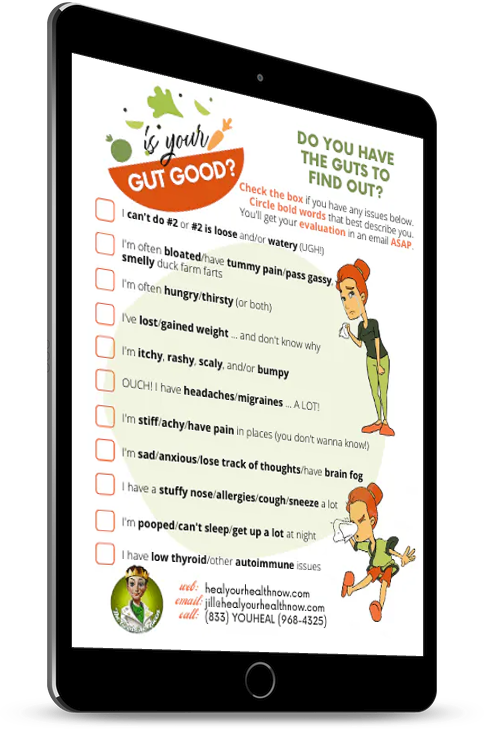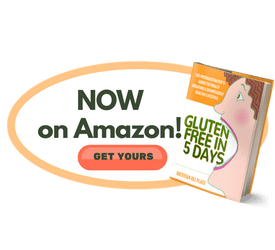 By Dietitian Jill Place
By Dietitian Jill Place
Wondering what I’m talking about when I say … experiment your way to health? Well … along with the change in your magic pill mindset I described in my last article, it’s time to get brave, do some research, and take control of your own health by self-experimentation.
THAT’S what this article is all about. Taking the ideas like getting real, changing your mind, including mental well-being, and hunkering down for the long haul one step further.
In the words of immortal composer Cole Porter …
You all have learned reliance on the sacred teachings of science
So I hope, through life you never will decline
In spite of philistine defiance … to do what all good scientists doExperiment … Make it your motto day and night
Experiment … And it will lead you to the light
The apple on the top of the tree is never too high to achieveSo take an example from Eve … Experiment
Be curious … Though interfering friends may frown,
Get furious … at each attempt to hold you downIf this advice you’ll only employ
The future can offer you infinite joy … and merriment
Experiment … and you’ll see
I do think that Porter was referring to his closeted gay lifestyle here. But the message is still the same … infinite joy, merriment, and ultimate empowerment if you experiment.
The Puzzle That Is Your Body
Even though human beings have many similarities, we’re all born with unique genetics and physiologies. Not to mention growing up with diverse psychological traumas and concerns. And totally different ways of processing and understanding all this information.
The reality is that some bodies have hardy immune systems, great attitudes, iron-clad stomachs, hardly-changing normal weights, and are naturally active way into advanced years. But that’s not most of us … especially if you live in our current, over-polluted world.
Another reality is that the current medical model isn’t helping a lot of us get well. And there ARE alternative options but they can be out of reach financially for many.
So it’s often left up to you to figure out what’s wrong. To that end, I really love Phoebe Lapine’s The Wellness Project. It’s a book that explores Phoebe’s yearlong experiment in how to get well from an autoimmune disease. But you can also get her original blogs on her website.
In her initial blog post, Phoebe explained “I’ll be filling you in on my experiments, sharing tips from my research, and giving you a first look at the experience of what it takes to challenge your body (and popular health trends) in order to find that elusive “balance.” Every month, she ran tests in different areas of wellness.
To that end, she experimented first with a detox … giving up alcohol, sugar, and caffeine … and then explored monthly topics that ranged from healing her gut to cleaning up her hair and makeup products. And continually updated you on all her progress.
Beginning YOUR Wellness Self-Experiment
Here are some ways to do your own self-experiments. First of all, develop a mindset that you’re like a detective unraveling the case … uh … CAUSE of what’s ailing you … NOT caving in to “band-aid” solutions for your symptoms. And be willing to be curious and accept the fact that some things you try just won’t work.
So, instead of getting mad and hanging dark crepe upon your entire life, you mark down results in your psychic (or real) spiral-bound book. And ponder why they didn’t work … possibly the wrong thing to do or way to do it … before you rerun or rethink it, or possibly abandon it for good. Just like scientists do.
Try things for their information and education value with no expectation of their outcome. But … hey … streamers and salutations if things do work for you. A little cake wouldn’t hurt either … but make it gluten-free!
Setting Up Your Self-Experiments
First of all, just like a good scientist, it’s important to pick a wellness goal and then identify some measurements you’ll use to track your success toward that goal. For example, I’m doing an experiment to see if intermittent fasting will work for me.
I’d really like to lose some weight (yes … the dietitian is admitting that). So I’m doing a 30-day experiment to see if intermittent fasting will help with that. I read a couple of articles about it from colleagues that I trust. As well as a book called “The Laid Back Guide to Intermittent Fasting” eloquently and informationally well-written by a lay person (yes … I read those too!).
Setting Up Rules
Second, I set up some rules for myself. When you’re dealing with changing your diet, it’s important to figure out and then commit to whatever actions you’ll take.
I’ve found by working with many clients that the best way to do this is to choose your own “diet”. Or, if you’re working with a practitioner, you both agree upon a plan together. One way you can do this is to identify things that you might “always”, “never”, or “sometimes” do with food.
OK … so here’s mine. I will “always” eat within a six-hour timeframe every day, mostly between 12 noon and 6 pm. I will “always” eat whatever I want (I DO, however, honor my previous food rules [and separate experiments] of being gluten- and dairy-free) in that timeframe.
I will “never” eat outside my six-hour timeframe. The six hours can be adjusted up and down as needed (like today when I ate later because I spent hours on the internet with a technician trying to figure out what was wrong with my Facebook Lives).
I will “sometimes” drink wine when I’m out for dinner and very occasionally at home. That’s IT … you can make your rules as simple or complicated as you want … but they’re YOURS and no one else’s.
Tracking the Success of Your Self-Experiments
The tracking of the success of my intermittent fasting experiment was easy and measurable … all I had to do was step on the scale. I’ve lost six and a half pounds in three weeks … a definite reason to go on!
I also had to admit that I’m not much of a breakfast person … and not hungry in the morning no matter what I eat at night (I’ve experimented with heavy and light meals around 5:30pm and found it makes no difference in my morning hunger). So starting my intake around noon wasn’t a problem at all.
I did find, however, that my diet (I’m defining “diet” in a broad sense here as something that I eat) kicked up some disordered eating thoughts like “what if I eat only one meal a day … I’ll lose weight faster … right?” But I instantly dismissed them, in addict vernacular, as “stinkin’ thinkin'”.
That’s another article for another day. After all, remember that what Phoebe Lapine was ultimately seeking was “balance”.
But other diet (in a broad sense) experiments are not so finitely measured. So you have to depend upon judging how your body feels. This is a great opportunity to make friends with it.
When I did the gluten-free experiment, I noticed that my bowels normalized and my “morning mucous” along with overall allergic reactions diminished. With dairy, eczema that I’ve had for years and years cleared up within a few days. Definitely reasons to continue …
Self-Experimentation Beginning Steps
Here are some suggested by Julie Slowiak in her article …
- State your target behavior in specific, objective, and measurable terms. Slowiak explains that you need to state this in terms that someone else would understand. So “I want to lose weight by eating anything I want for only six hours a day and recording my weight for a month” might be a good way for me to describe what I’m doing.
- Create a tracking system to record your data. Track your weight loss … I do mine on my Fitbit app. It also wouldn’t hurt to keep a journal to record feelings, “cheats”, successes, and “stinkin’ thinkin'”
- Collect “baseline” data on your target behavior. I did this by doing some research on intermittent fasting, its benefits, and how to begin it.
Making Your Action Plan
- Use this baseline data to make your action plan. Your actions are whatever you believe will change your behavior. Does any existing research or evidence exist to support the intervention you want to try? Use the knowledge you have about your body/situation and any research you’ve done to state your “always”, “never” and “sometimes”. You can do this with any type of behavior … not just diet.
- Implement your action plan and continue to track your behavior and record data. How will you know if your plan is or is not working? Continuous recording is necessary for identifying your behaviors and trends over time. Including all the times you “cheated” on the plan. If your data isn’t thorough, you won’t know where to go next if your plan fails.
- Examine your data. If what you did worked, keep doing it; if it didn’t work, figure out why. Assess whether it was the action plan or how you went about it. Then figure out if you’ll modify the action plan for the next go-round or toss the idea altogether and do something new instead. For example, Kayla Cox, the author of the book I read, suggested a “cheat” day once a week. I haven’t done that yet, but might on the next go-round.
What’s Next?
There you have it. It also helps if you share your experiment with a friend or loved one. Because you might need help and support along the way. Oh … and keep me posted too!
After this was published, I also wrote two other health self-experiment articles. I’d suggest that you read them both, along with picking up the GREAT worksheet to make your lifestyle change a reality. Read Setting up YOUR Health Self-Experiment and Finishing YOUR Health Self-Experiment.
We conduct experiments to find out something we do not know ~ Murray Sidman


Leave a Reply